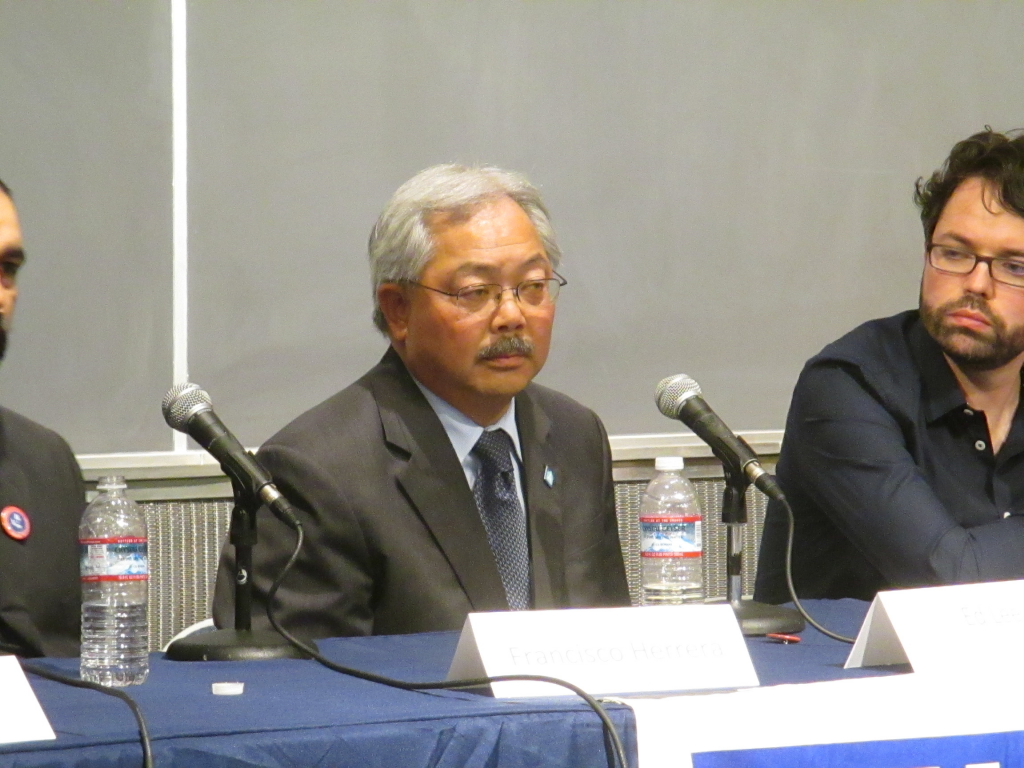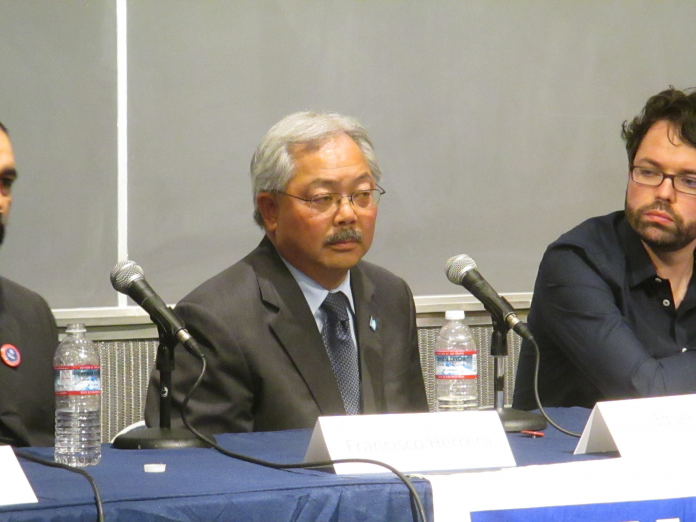So we haven’t seen much of Mayor Ed Lee for a while, partly because he doesn’t seem to want to hear protesters go after him, and partly because he’s been out of town, in Brazil, on a business junket paid for by PG&E, Silicon Valley Bank, a big real-estate firm, and a few other corporate types.

What’s the mayor doing in Brazil? Well, according to a press release from his office, he’s looking to lure more businesses to San Francisco:
The LatinSF initiative aims to promote San Francisco and the opportunities for companies and investors in Brazil and Panama to expand and take advantage of what the city and the region has to offer. … the goal of LatinSF is to create a welcome environment for established Latin American companies to expand and startups to locate in San Francisco.”
LatinSF is part of a group called the San Francisco for Economic Development, which also runs ChinaSF and SFAsia. The group’s overall goal is to convince more businesses, particularly tech businesses, to move to this city.
It’s one of those strange hybrids, funded in large part by big corporations and the Chamber of Commerce but operating out of City Hall, through the Mayor’s Office of Economic and Workforce Development. It puts some of the biggest business interests in the city directly in the middle of public policy.
But here’s what’s particularly interesting: The outfit did a study a couple of years ago, which got very little news attention, that looks at great places in the city for tech companies to set up shop.
The results are a bit alarming.
For example, the study notes that
The 3rd Street Corridor — or Dogpatch as some call it — has great potential for further redevelopment and expansion of tech companies. Filled to the brim with vacant industrial sites waiting to be reawakened, this neighborhood has a bright future ahead of it, and not only because it is known for the sunniest weather in San Francisco.
Oh, and then there’s the Inner Mission and the Central Waterfront:
The area contains large-scale former industrial buildings as well as numerous little workshops and warehouses. While Inner Mission and Potrero Hill are close to established tech neighborhoods, the area along the central waterfront contains some as of yet undiscovered neighborhoods – and real bargains.
More:
With an edgy, artsy feel, Inner Mission is an ethnically diverse neighborhood that evokes a strong sense of community between the young professionals that are attracted there to live, work, and be hipster (sic). Its (sic) an environment that fosters creativity and innovation among the fun-loving urban intellectuals that bask in its lively, cultural atmosphere. These young proffessionals (sic – this outfit really needs an editor) are driving the technology and design industries, and the Inner Mission is full of large, unique office spaces ready to be called home by expanding tech companies that wish to hire them.
The message of this city-sponsored, city-backed group that operates out of the Mayor’s Office and sponsored his trip to Brazil: Let’s take what little industrial space is left in San Francisco, and turn it all in to tech offices. Oh, and let’s celebrate the gentrification of the Mission! Hipster! Edgy!
There is, of course, a bit of a problem with this plan: Much of the area under discussion isn’t zoned for office space. In almost all of the Inner Mission, zoning allows only community-serving businesses – that is, medical and dental, accounting, legal offices, nonprofits – but bans the kind of office space that tech companies need and use.
There are, nevertheless, tech companies moving in – illegally, for the most part – and for the most part, the city hasn’t done anything about it. The problem with this, of course, is that it drives up rents, which means it drives out small community-serving businesses and nonprofits.
That, of course, is the model we’ve seen too often: Airbnb and Uber would not exist as billion-dollar companies if they and their contractors followed the laws on the books at the time they started up.
The reason that the city uses zoning for what’s called PDR – production, distribution, and repair – is that restrictive zoning keeps property values down and thus keeps rents affordable to these types of uses. Once you allow wholesale conversion of industrial space to office use, you lose the industrial space forever.
It also means that community-serving nonprofits get forced out – which has been the story of mid-Market ever since the Twitter tax break turned that area into Tech Central.
There are those who argue, as some people quoted in this NY Times story do, that the tech market in SF is way, way too overheated, and that it might be a fine thing if the biz slowed down a little bit.
Most of that discussion focuses on the housing market, and what the boom has done to working-class tenants, who are getting forced out by the tens of thousands.
But the loss of PDR space – and space for community-based nonprofits – is also a huge deal. And now the mayor is taking a junket to Rio with money from the folks who have an agenda that involves breaking the zoning laws the mayor is supposed to enforce and destroying what’s left of the city’s low-rent space.
I shouldn’t be surprised.




